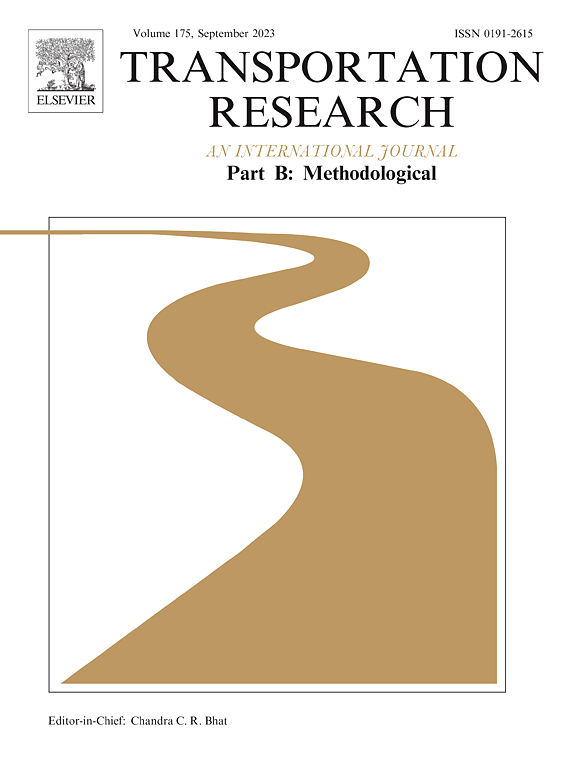A geometric cognition pedestrian dynamics model considering heterogeneous collision avoidance behaviors
IF 6.3
1区 工程技术
Q1 ECONOMICS
引用次数: 0
Abstract
Collision avoidance is one of the crucial behaviors in pedestrian dynamics, especially in high-density scenarios where it frequently occurs to maintain crowd safety and stability. However, the heterogeneity of this behavior has not been well investigated. Given the advantages of geometric compatibility, a microscopic pedestrian flow model combining the Voronoi diagram and velocity obstacle approaches has been proposed to fully quantify heterogeneous collision avoidance behavior. In this model, the velocity region is dynamically partitioned into three sub-regions to describe the avoidance behaviors with different levels of aggressiveness. The concept of the difference to collision velocity is defined to characterize the evolution of aggressiveness, and a heuristic velocity region evolution rule is proposed to determine the walking velocity. To demonstrate the effectiveness of the model, a series of pedestrian flow scenarios are validated in terms of fundamental diagrams, self-organization phenomena, and behavioral heterogeneity. The impact of heterogeneous collision avoidance behaviors on crowd phenomena is then analyzed according to simulations. The DF-GLS algorithm is used to determine the crowd re-stabilization time. The results show that more aggressive behaviors lead to obvious stop-and-go wave and smaller Yamori’s band index of lane formation phenomenon. Sudden aggressive behaviors will disrupt crowd stability and even cause the crowd into a disorganized state. This model offers valuable insights and supports the optimization of emergency evacuation strategies with practical applications.
考虑异构避碰行为的几何认知行人动力学模型
避碰是行人动力学的关键行为之一,特别是在高密度场景下,为了维护人群的安全和稳定,避碰经常发生。然而,这种行为的异质性尚未得到很好的研究。考虑到几何兼容性的优势,提出了一种结合Voronoi图和速度障碍方法的微观行人流模型,以充分量化异构避碰行为。在该模型中,速度区域被动态划分为三个子区域来描述具有不同攻击程度的回避行为。定义了碰撞速度差的概念来表征攻击性的演化,并提出了一种启发式速度区域演化规则来确定行走速度。为了验证该模型的有效性,从基本图、自组织现象和行为异质性等方面验证了一系列行人流场景。通过仿真分析了异构避碰行为对人群现象的影响。采用DF-GLS算法确定人群再稳定时间。结果表明:侵略性行为越强,车道形成的走走停停波动越明显,车道形成的Yamori波段指数越小;突然的攻击行为会破坏群体的稳定,甚至使群体陷入无序状态。该模型提供了有价值的见解,并为实际应用中的应急疏散策略优化提供了支持。
本文章由计算机程序翻译,如有差异,请以英文原文为准。
求助全文
约1分钟内获得全文
求助全文
来源期刊
CiteScore
12.40
自引率
8.80%
发文量
143
审稿时长
14.1 weeks
期刊介绍:
Transportation Research: Part B publishes papers on all methodological aspects of the subject, particularly those that require mathematical analysis. The general theme of the journal is the development and solution of problems that are adequately motivated to deal with important aspects of the design and/or analysis of transportation systems. Areas covered include: traffic flow; design and analysis of transportation networks; control and scheduling; optimization; queuing theory; logistics; supply chains; development and application of statistical, econometric and mathematical models to address transportation problems; cost models; pricing and/or investment; traveler or shipper behavior; cost-benefit methodologies.

 求助内容:
求助内容: 应助结果提醒方式:
应助结果提醒方式:


